New Conversation Series to Discuss the Nature and Facets of Creativity
“Conversations at the Intersection” will take place Oct. 8 and Nov. 12
Creativity is essential in art, science, and technology. These three areas of human endeavor rely on the creativity of new ideas to add new elements and conceptual thinking to their domains. How is creativity in these three areas different and how is it similar? How do different fields debate and incorporate new ideas? Do they each have different underlying creative processes or are there lessons that can be applied across fields? Are there benefits by crossing boundaries? In what ways do these different areas could intersect and enrich one another?
A new McCormick School of Engineering series called “Conversations at the Intersection” aims to provide broad audiences a glimpse of the creative process across fields, inspiring ongoing discussion about the differences and similarities of creative fields.
Each session will feature a different scholarly panel composed of intellectual leaders from different backgrounds – art, architecture, writing, philosophy, engineering, science, filmmaking, design, and many more – that will discuss, debate, and articulate different viewpoints on the nature of creativity and explore what art, science, and technology can teach us about insights and creative progress. There will be opportunities for broad audience participation.
Conversations at the Intersection is free, open to the public, and does not require registration. The upcoming events will take place in the ITW classroom in the Ford Motor Company Engineering Design Center on the Evanston campus.
The series’ first installment will take place at 4 p.m. Wednesday, October 8. The panel will feature:
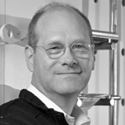 Bill Baker, a structural engineering partner in the Chicago office of Skidmore, Owings & Merrill, LLP and adjunct professor in McCormick’s civil and environmental engineering department. Baker engineered Dubai’s Burj Khalifa skyscraper, the tallest man-made structure in the world. His other works include the Pearl River Tower in Guangzhou, China and Chicago’s Millennium Park pavilion and pedestrian bridge.
Bill Baker, a structural engineering partner in the Chicago office of Skidmore, Owings & Merrill, LLP and adjunct professor in McCormick’s civil and environmental engineering department. Baker engineered Dubai’s Burj Khalifa skyscraper, the tallest man-made structure in the world. His other works include the Pearl River Tower in Guangzhou, China and Chicago’s Millennium Park pavilion and pedestrian bridge.
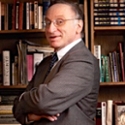 Saul Morson, the Frances Hooper Professor of the Arts and Humanities and professor of Slavic languages and literature in Northwestern’s Weinberg College of Arts and Sciences. Morson is interested in the history of ideas, literary theory, and the relation of literature to philosophy. He has written books on the openness of time to contingency and choice, on creativity in our use of daily language and quotations. His Introduction to Russian Literature course regularly attracts up to 500 students, making it is the largest course of its kind in the United States.
Saul Morson, the Frances Hooper Professor of the Arts and Humanities and professor of Slavic languages and literature in Northwestern’s Weinberg College of Arts and Sciences. Morson is interested in the history of ideas, literary theory, and the relation of literature to philosophy. He has written books on the openness of time to contingency and choice, on creativity in our use of daily language and quotations. His Introduction to Russian Literature course regularly attracts up to 500 students, making it is the largest course of its kind in the United States.
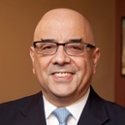 Julio M. Ottino, the Dean of the McCormick School of Engineering, Distinguished Robert R. McCormick Institute Professor, and Walter P. Murphy Professor of Chemical and Biological Engineering. Before pursuing a PhD in engineering and making fundamental contributions in chaos theory, Ottino established a career as an artist and is now working on a book about the creative process.
Julio M. Ottino, the Dean of the McCormick School of Engineering, Distinguished Robert R. McCormick Institute Professor, and Walter P. Murphy Professor of Chemical and Biological Engineering. Before pursuing a PhD in engineering and making fundamental contributions in chaos theory, Ottino established a career as an artist and is now working on a book about the creative process.
A second event will take place at 4 p.m., Wednesday, November 12. The panel will include:
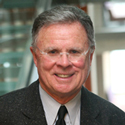 Larry Booth is a member of the Chicago Seven, the first-generation of postmodern architects in Chicago. He is the Richard C. Halpern/RISE International Distinguished Architect in Residence and director of the Architectural Engineering and Design program at McCormick and the principal and founder of Booth Hansen Associates, a Chicago-based architecture, planning, and interior design firm.
Larry Booth is a member of the Chicago Seven, the first-generation of postmodern architects in Chicago. He is the Richard C. Halpern/RISE International Distinguished Architect in Residence and director of the Architectural Engineering and Design program at McCormick and the principal and founder of Booth Hansen Associates, a Chicago-based architecture, planning, and interior design firm.
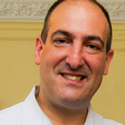 Sandy Goldberg, professor and chair of the philosophy department at Weinberg. His research is in the areas of the theory of knowledge, philosophy of language, and philosophy of mind. He is particularly interested in the use of language the relevance of social factors to the communication, production and, dissemination of knowledge, and the relationship between language and thought.
Sandy Goldberg, professor and chair of the philosophy department at Weinberg. His research is in the areas of the theory of knowledge, philosophy of language, and philosophy of mind. He is particularly interested in the use of language the relevance of social factors to the communication, production and, dissemination of knowledge, and the relationship between language and thought.
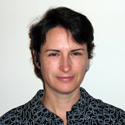 Jeanne Dunning, contemporary artist and professor of art theory and practice in Weinberg. Her photographic, sculptural, and video work explores humans’ relationships to their own bodies. Her art has been shown across the United States, Europe, and Australia.
Jeanne Dunning, contemporary artist and professor of art theory and practice in Weinberg. Her photographic, sculptural, and video work explores humans’ relationships to their own bodies. Her art has been shown across the United States, Europe, and Australia.